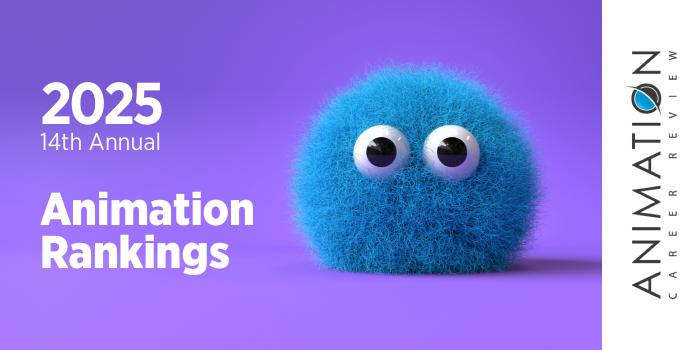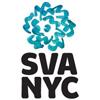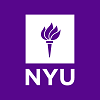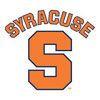When it was established in 1873, the College of Visual and Performing Arts (VPA) at Syracuse University (SU) became the first degree-granting school of its kind in the U.S. The College of VPA went on to become one of the first in the country to grant a degree in music; one of the nation’s first colleges to require four years of study in both theory and music; and one of America’s first academic programs specifically designed for the study of rhetoric and communication.
Today, the College of Visual and Performing Arts at SU houses seven schools and departments, along with the recently launched 2022 VPA LA Semester. This program provides the opportunity for students to intern in Los Angeles while taking courses led by some of LA’s leading industry professionals. VPA departments and schools include the Department of Film and Media Arts; the School of Design; the Department of Communication and Rhetorical Studies; the School of Art; Setnor School of Music; the Department of Creative Arts Therapy; and the Department of Drama.
Programs for animators are housed in the Department of Film and Media Arts (DFMA). Options include the Computer Art and Animation BFA; a Computer Art MFA; and an Animation and Visual Effects (VFX) minor. All DFMA students may participate in global studies programs such as the Italian Film Studies and Filmmaking Summer in Bologna, Italy; the semester-long Film Studies Program in Prague, Czech Republic; or the 10-day Summer Immersion Program in Venice, Italy.
Other department benefits include the visiting artist series, including past guests such as past president of Pixar Animation Studios Jim Morris, actor/director Giancarlo Esposito, Pixar post-production director Cynthia Slavens; extensive computer art and animation facilities with access to Maya, Unreal Engine, ZBrush, Substance Painter, Houdini, Creative Cloud, Unity, and TVPaint; the local Women in Animation chapter; access to Orange Shorts animation production studio; and the Canary Lab, which hosts workshops, speakers, collaborations, visiting artists, research, exhibitions, and other events.
The Animation and VFX minor at Syracuse University is a 21 credit-hour program that allows students to focus in Animation, Visual Effects, or both. Course requirements include Introduction to 3D Animation; Intermediate 3D Animation; and Advanced Animation. Other course examples include
Drawing for Illustration; Animation Workshop I-II; Introduction to Acting for Non-Majors; Drawing II: Representation to Conceptualization; Advanced 3D Animation and Visual Effects; Previz and Character Development for Animation; Film Scriptwriting; Narrative Drawing; and Visual Effects Workshop I-II.
Upon completion of the SU Animation and Visual Effects minor, students may pursue the Computer Art and Animation BFA or programs in other SU colleges. Students are also prepared to pursue entry-level positions in the entertainment industry, games, and advertising industries.
The Computer Art and Animation BFA at Syracuse University is a 121 credit-hour program consisting of major requirements, studio electives, culture studies, free electives, and academic electives. All students will complete the First Year Seminar (FYS), which explores areas such as ethics, health and wellness, socialization, and development of identity. Upon completion of the FYS, students will begin taking major and other courses.
Course examples for the program include Introduction to Programming for Visual Art; Intermediate 3D Animation; Drawing for Illustration; Advanced Animation; Conversations in Film and Media Arts I-II; Art and Craft of Animation; Film and Media Arts Advanced Studio; and Topics in Computer Gaming. Students will also complete History of Animation; Studio 1: Practices of Academic Writing; and Studio 2: Critical Research and Writing.
Examples of studio electives include Visual Effects Workshop I-II; Previz and Character Development for Animation; Special Topics in Digital Art; Animation Workshop I-II; and Topics in 3D Animation.
The Computer Art and Animation program at Syracuse University culminates with a senior project and portfolio completed across two courses. Graduates are prepared to pursue roles across the entertainment, games, and advertising industries, among others.
Program alumni have been hired at places such as Sony Pictures Imageworks, Lucasfilm, Industrial Light & Magic (ILM), Cartoon Network, Pixar, Blizzard Entertainment, Tippett Studio, MPC, and Filmworks/FX.
Founded in 1980 by computer artists Edward Zajec, the Computer Art MFA program at Syracuse University consists of 60 credit hours completed over three years. Focus areas include Computer Animation; VFX; Sonic Art; Gaming; Physical Computing; Software Art; Electronic Objects; and Multi-Channel Installation.
All students may participate in the residency program in LA known as the Turner Semester. All MFA students also have 24/7 access to computer art facilities; audio production, video post-production, and recording studios; dedicated Apple Mac Pro workstations; video camcorders and field audio recorders; and facilities outfitted with range of industry software and physical computing gear.
The Computer Art MFA program at Syracuse University culminates with an oral examination, final project, and presentation. Graduates are prepared to pursue advanced roles in all areas of entertainment, game design and development, advertising, education, and research.
Program alumni have been hired at major networks and studios such as Industrial Light & Magic (ILM), Cartoon Network, Pixar, Blizzard Entertainment, MPC, Sony Pictures Imageworks, Filmworks/FX, and Tippett Studio.
Founded in 1870, Syracuse University is an R1 research university that serves approximately 22,000 students from all 50 states and 120 countries. The school provides more than 500 majors, minors, and advanced degree programs across 13 colleges and schools. In addition to campuses in Syracuse, Manhattan, DC, and Los Angeles, Syracuse University operates overseas centers in Chile, London, France, Spain, Italy, and Poland. Syracuse University is accredited by the Middle States Commission on Higher Education (MSCHE).












